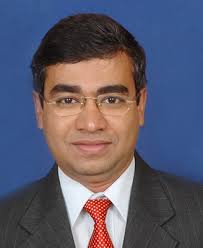Profile
Dr. Asim Ghosal is a Consulting Engineer in the Structures domain at the Bangalore Engineering Center of GE Aviation. In this role, he provides Technical Leadership across teams engaged in Structural Design & Analysis of NPI engines as well as supporting Matured fleets of Commercial aircraft engines. Asim graduated with a B.E. in Mechanical Engineering in 1990 from Calcutta University, and then completed M.E. (in 1992) and Ph.D. (in 1995) in Mechanical Engineering from Indian Institute of Science, Bangalore. His specialization was in Numerical Fracture Mechanics. Asim has been with GE since 1999, and has done various roles of increasing responsibility in both Organizational Leadership path and Technology Leadership path. Out of total 19 years, he spent 5.5 years in Gas Turbine design in GE Energy and rest in GE Aviation, holding “Consulting Engineer” Control Title both in Rotors and Structures. Prior to joining GE, Asim had 4 years of R&D experience as a Defence Scientist, Govt of India, in the Light Combat Aircraft (Tejas) project.


